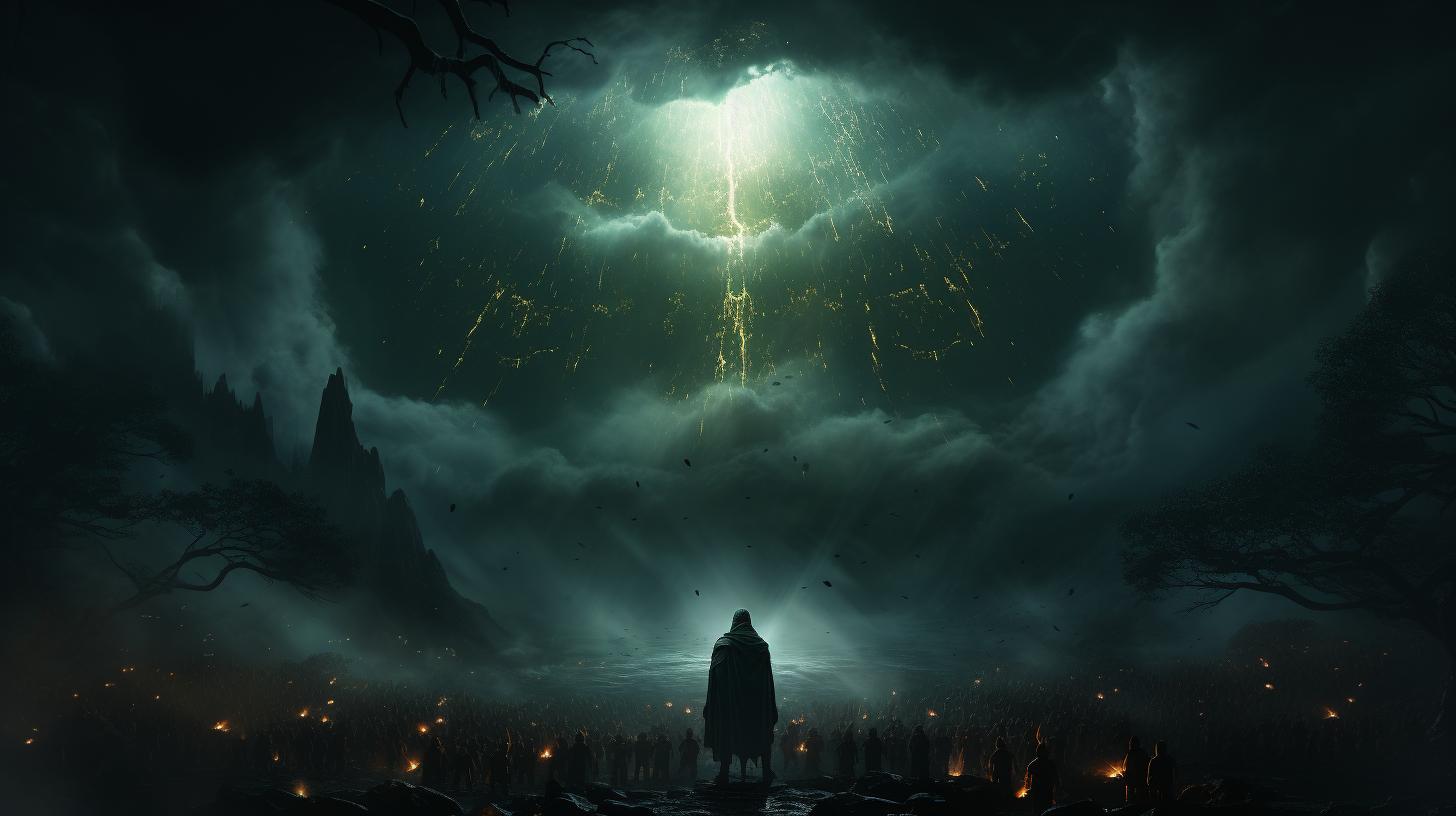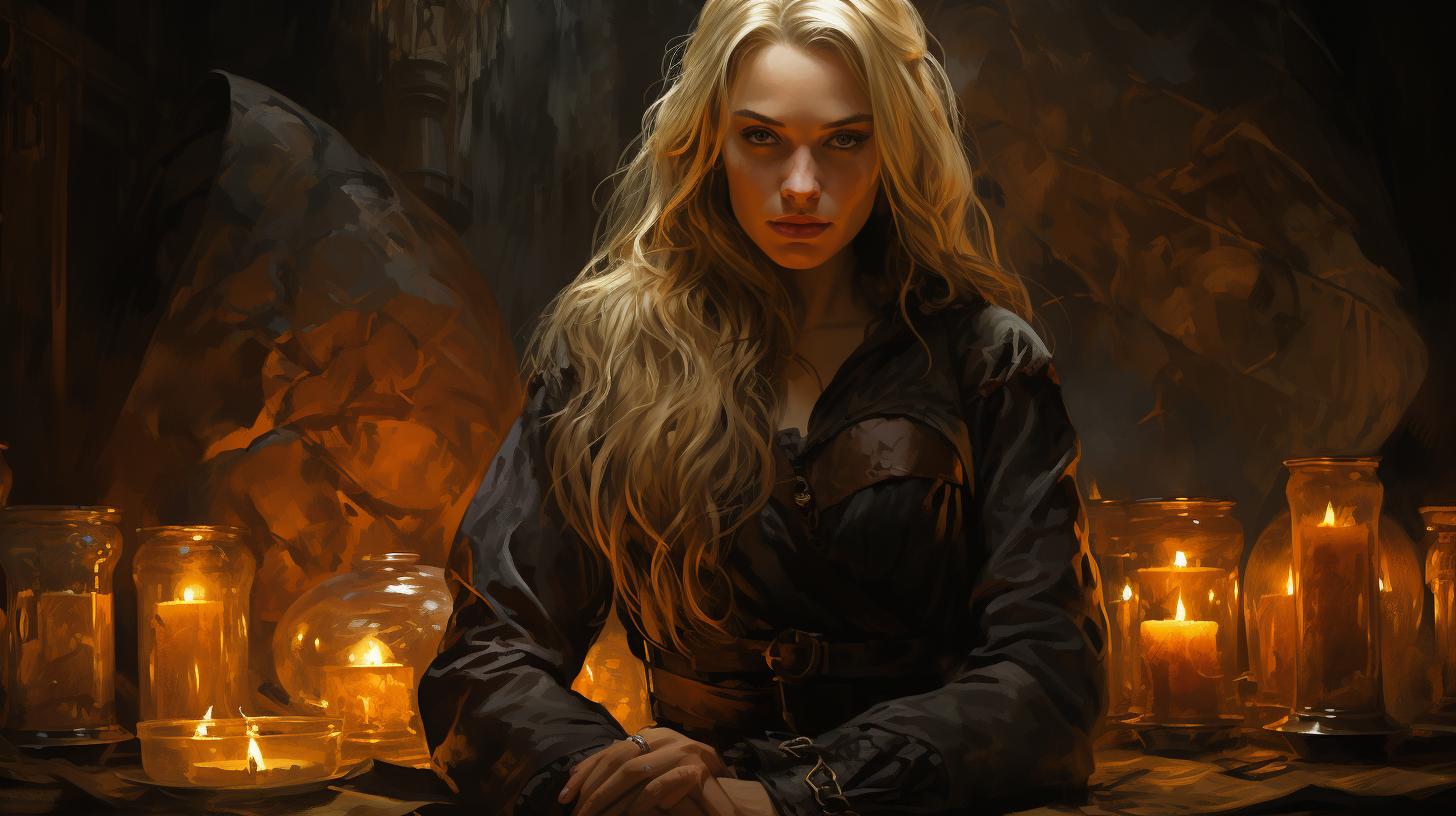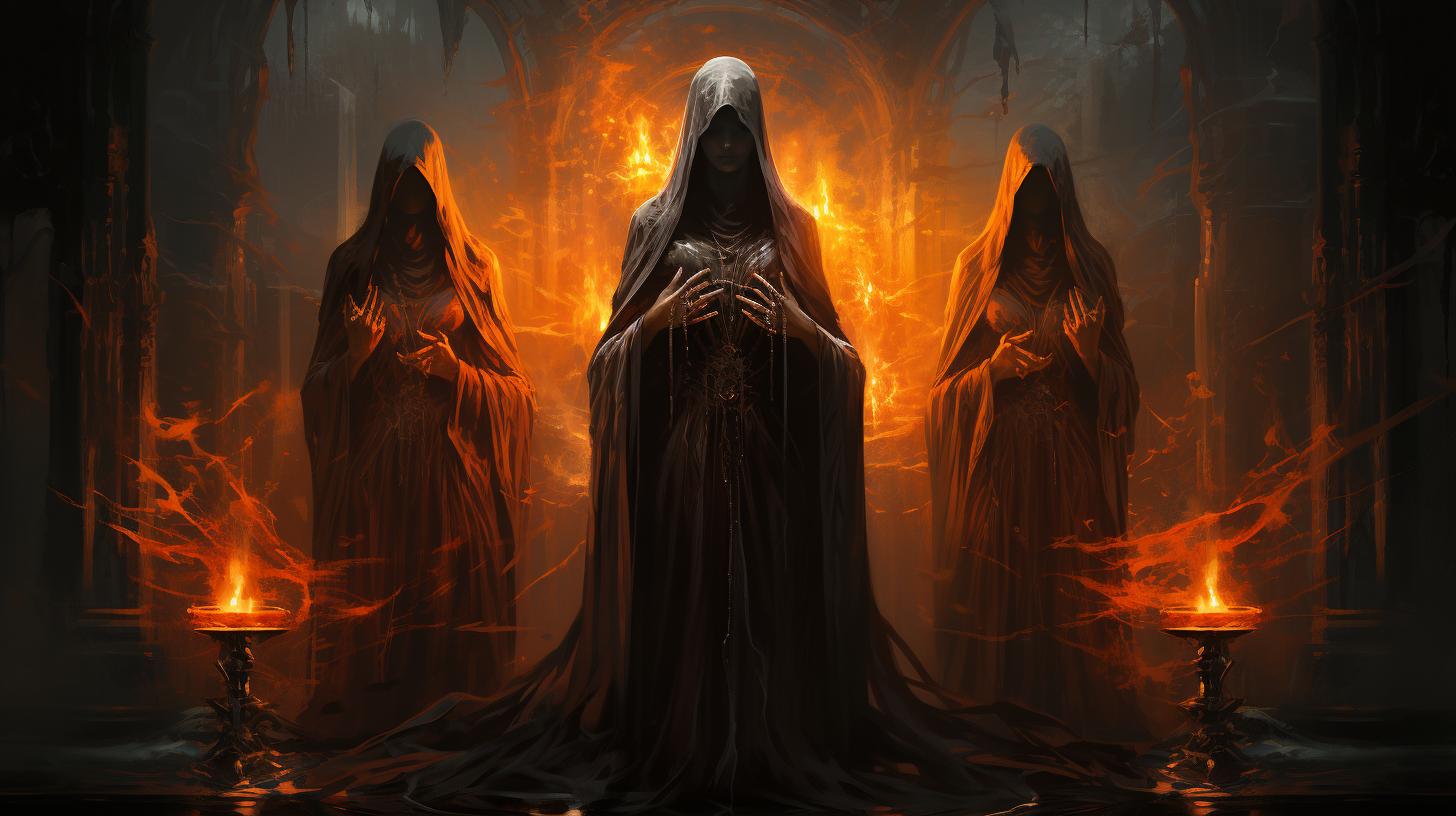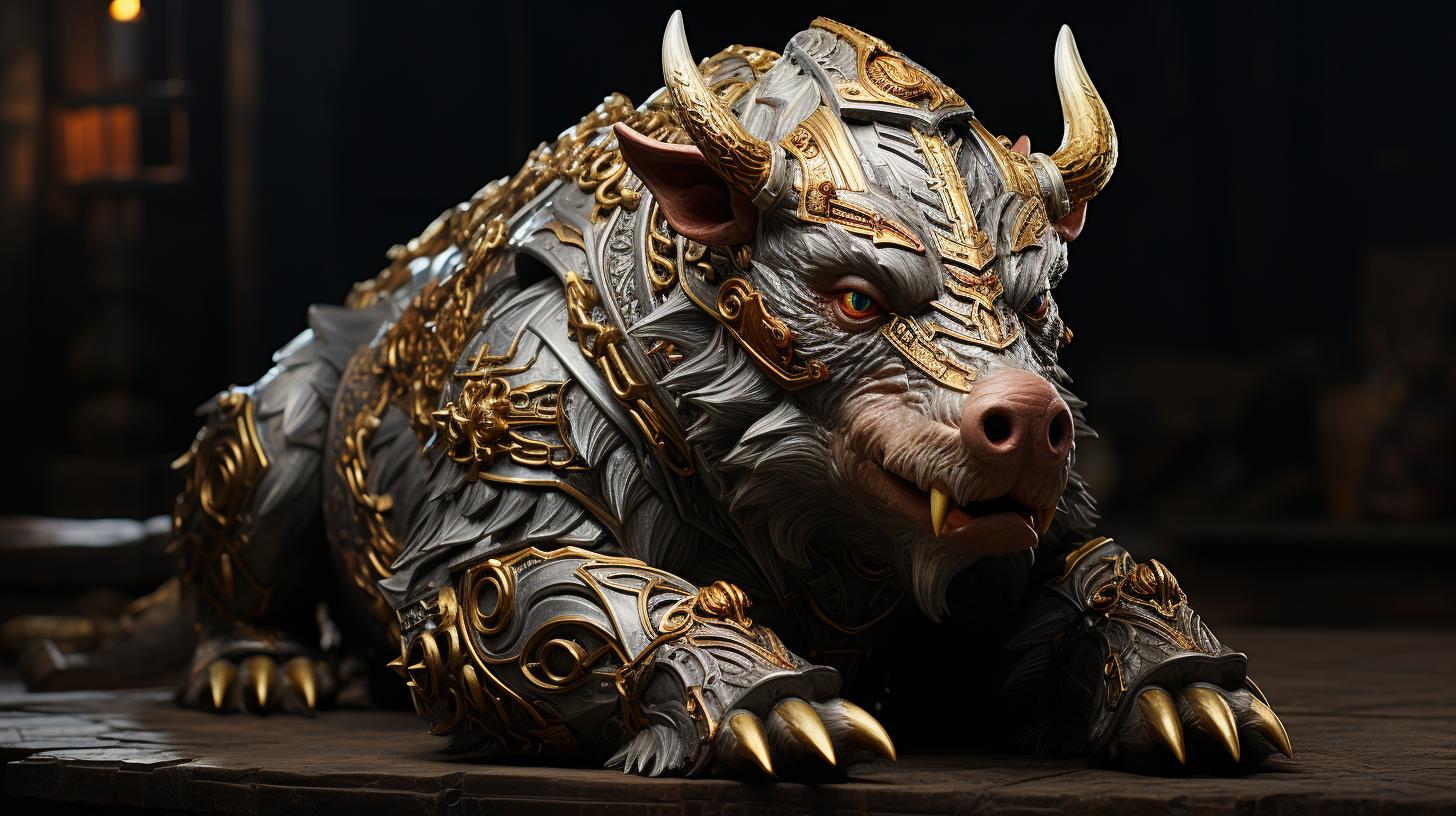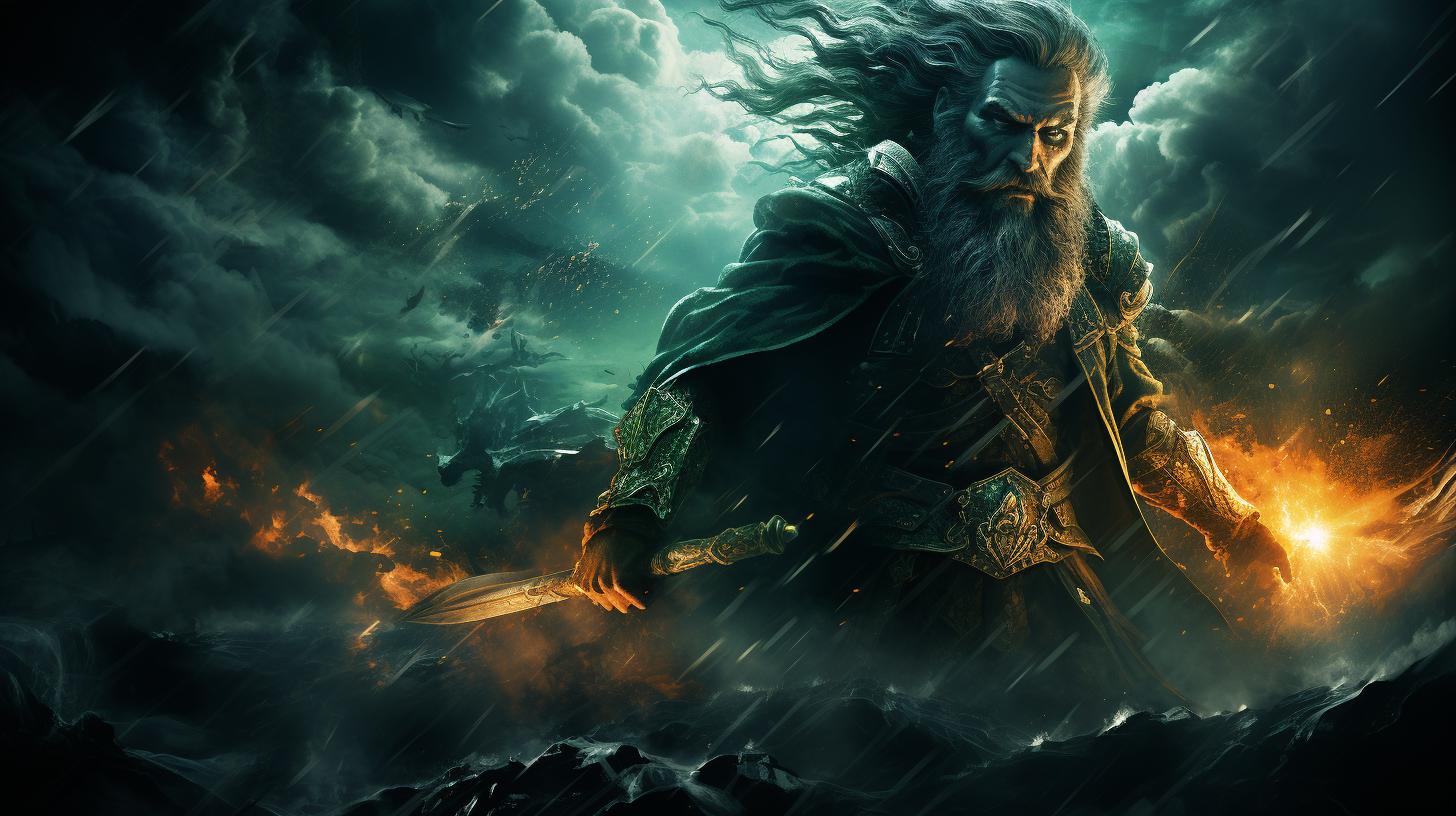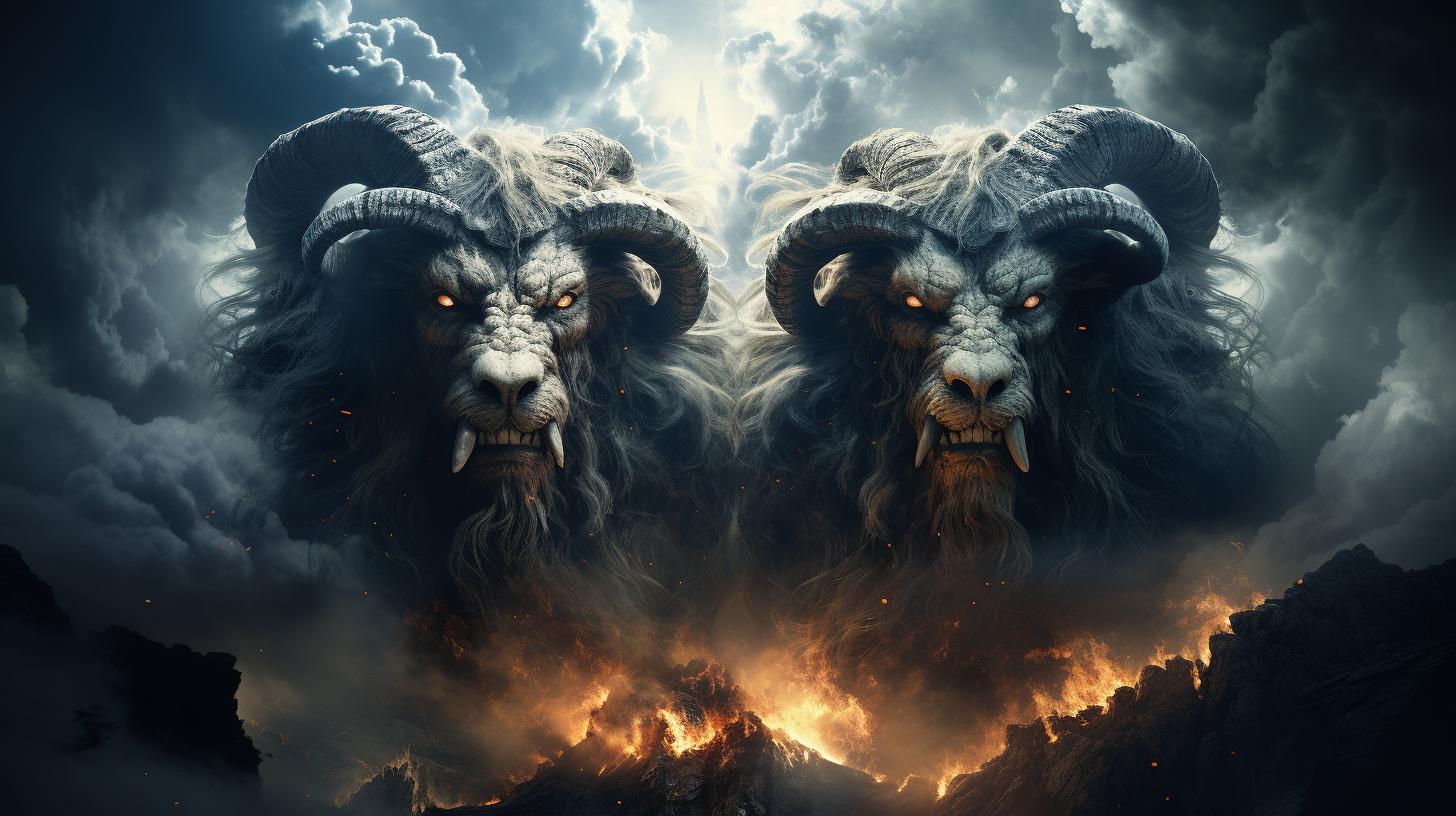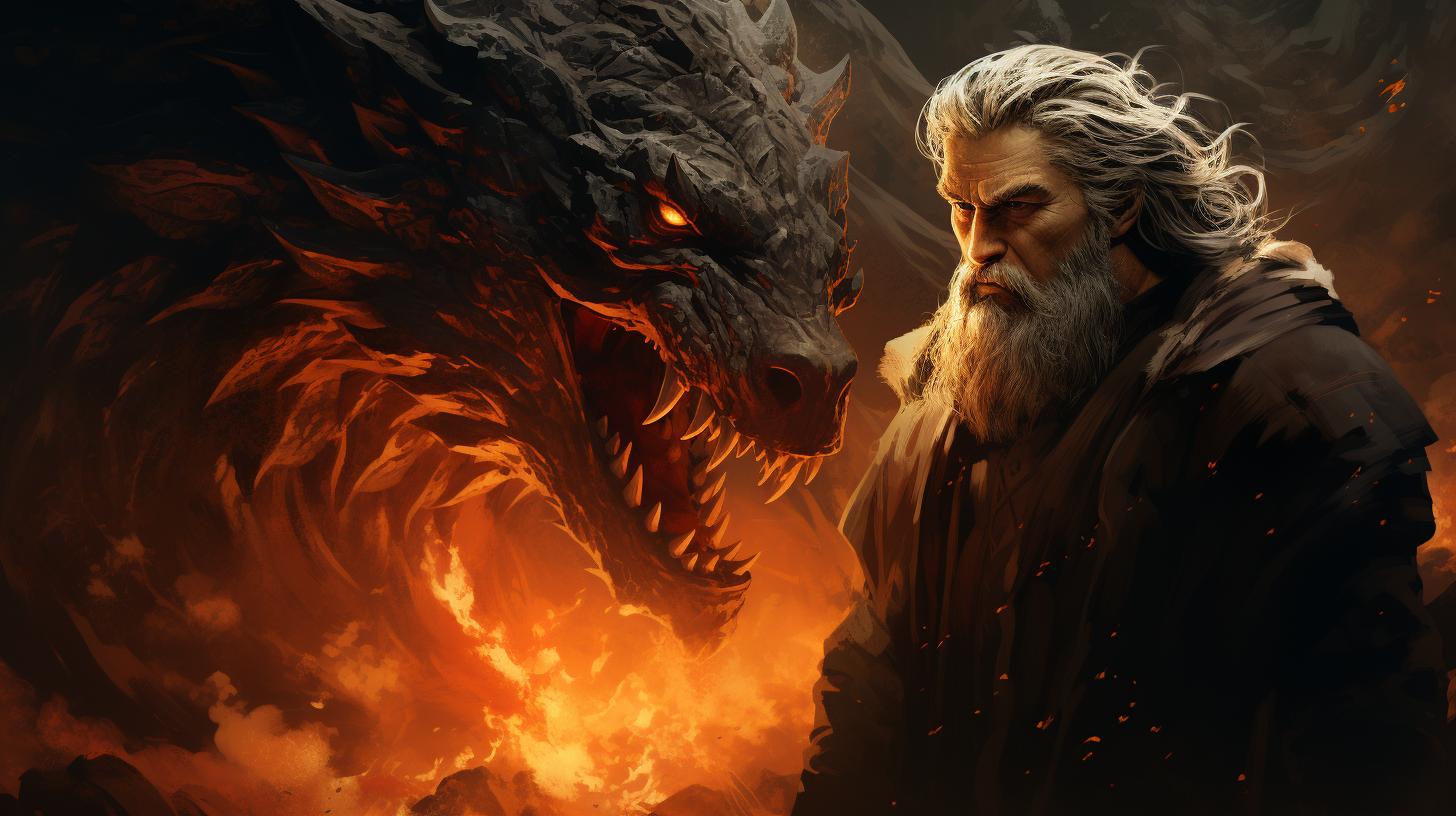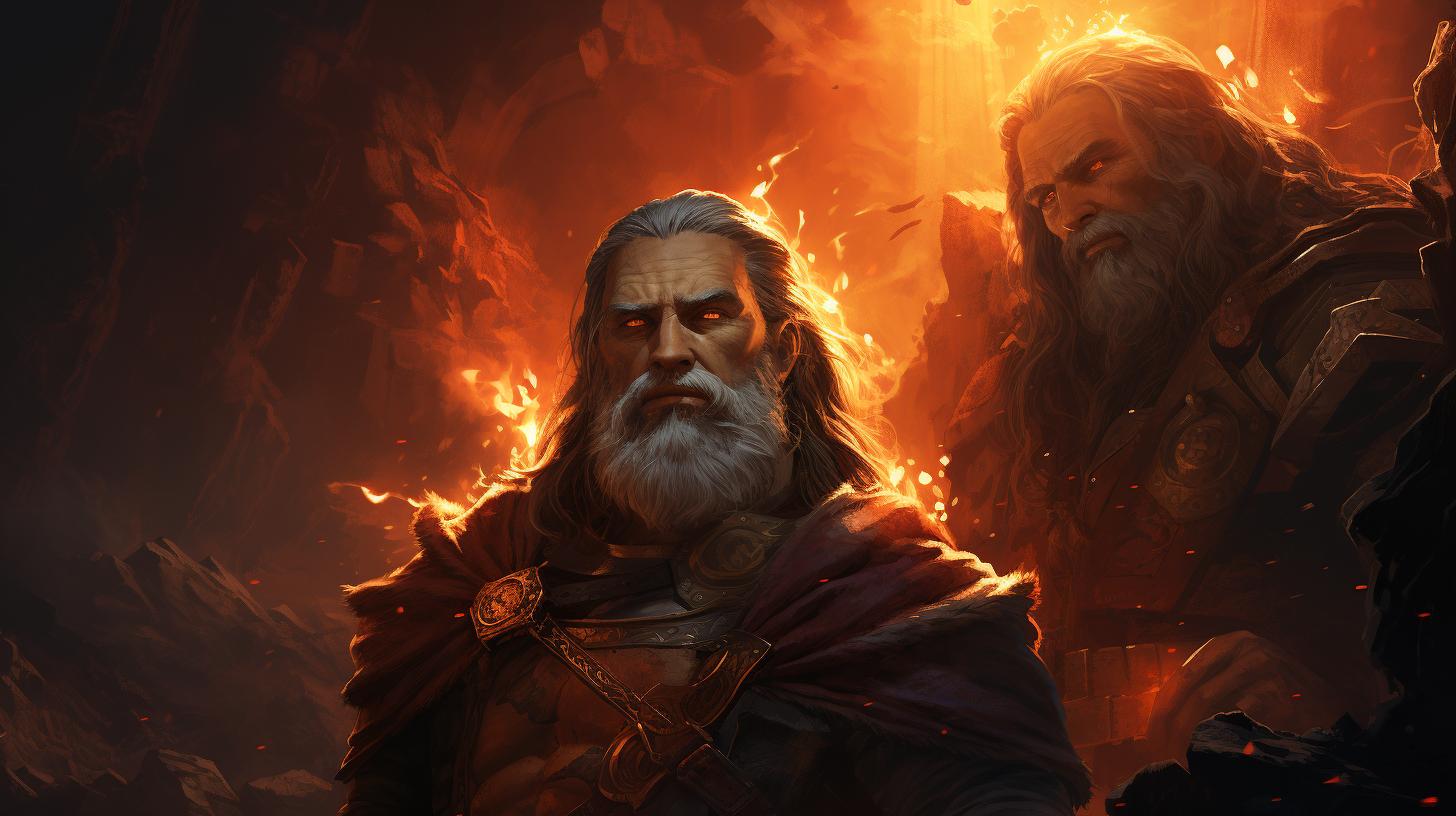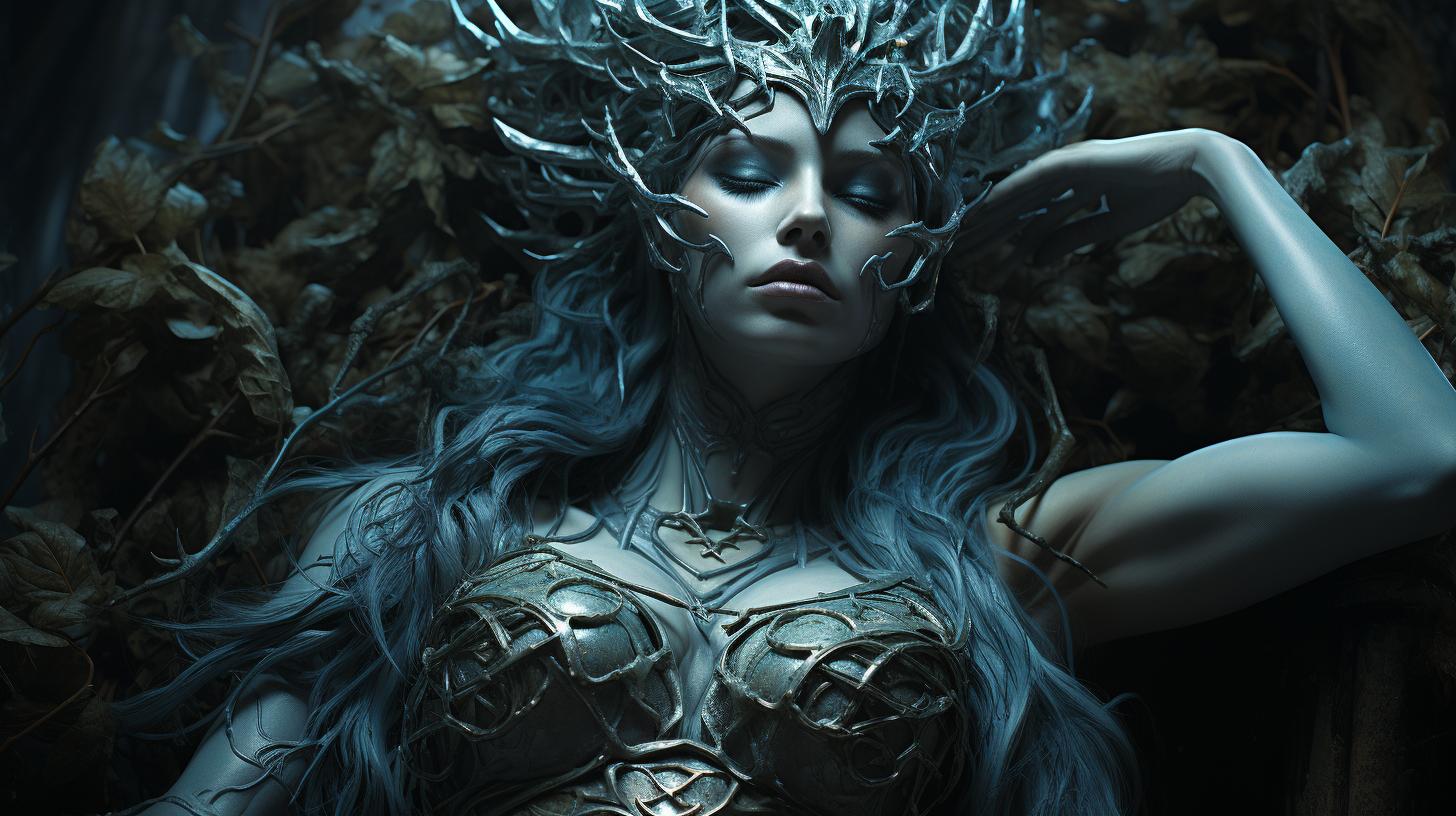Norse Mythology Vardoger: The Enigmatic Spirits of Scandinavian Folklore
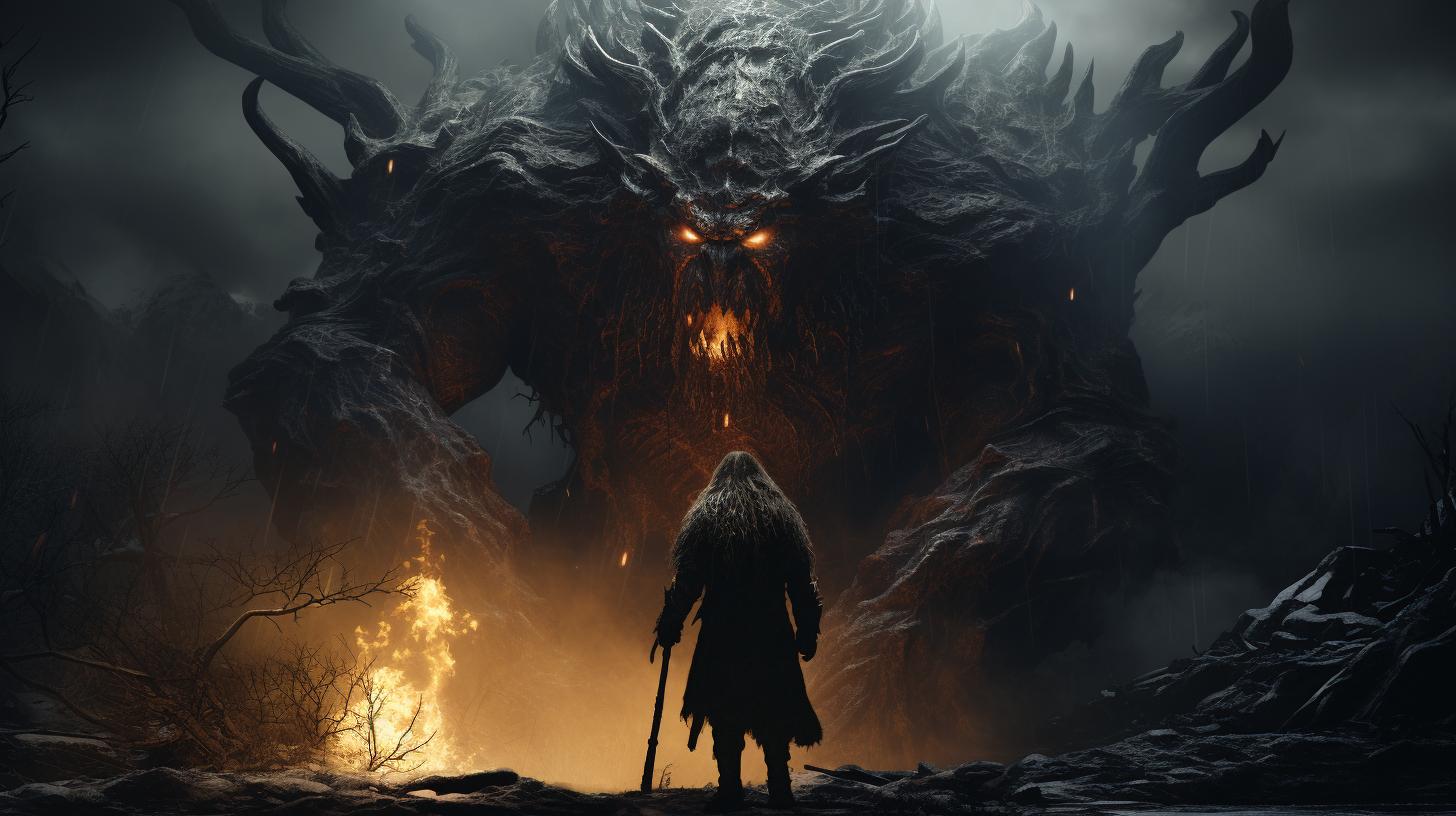
Norse mythology Vardoger, the enigmatic spirits of Scandinavian folklore, hold a significant place in Norse mythology. Believed to precede individuals in location or activity, Vardoger manifest as a subtle variation of déjà vu.
Revered as friendly and calming entities, they imitate a person’s steps, voice, scent, or appearance, leading witnesses to believe they have encountered the actual person before their physical arrival. Although unseen, their presence is identified through distinctive sounds, such as footsteps and opening doors, aligned with the individual they represent.
Explore the origins, cultural significance, and contemporary relevance of Vardoger in Norse mythology.
The Origins of Norse Mythology
Norse mythology holds a rich and storied history that has captivated generations with its tales of gods, heroes, and supernatural beings. The origins of Norse mythology can be traced back to the ancient Scandinavian people who inhabited the region during the Viking Age, from the 8th to the 11th century.
These early Norse societies believed in a complex and intricate pantheon of gods, each possessing distinct powers and personalities. The stories and legends surrounding these deities were passed down orally from generation to generation, weaving together a tapestry of myth and folklore.
The early Norse mythology drew inspiration from various sources, including the earlier Germanic paganism and the wider Indo-European mythological traditions. As a result, it developed its unique characteristics and beliefs that set it apart from other mythologies.
Norse mythology was intricately tied to the natural world and reflected the values and aspirations of the Norse people. They sought to understand and make sense of the forces of nature, the cycles of life, and the mysteries of existence.
The gods and mythical beings served as powerful symbols, embodying different aspects of human experience and the broader cosmos.
The oral tradition and stories of Norse mythology were eventually recorded in written form during the Christianization of Scandinavia.
These writings, such as the Eddas and the sagas, not only preserved the mythology but also provided valuable insights into the beliefs and worldview of the ancient Norse people.
Today, the legacy of Norse mythology continues to resonate in popular culture, literature, art, and even in the names of the days of the week.
It stands as a testament to the enduring fascination and enduring relevance of these ancient tales.
Understanding Vardoger in Norse Folklore
The concept of Vardoger is an intriguing aspect of Norse mythology. This section delves deeper into the understanding of Vardoger as a phenomenon that holds significance in ancient Scandinavian folklore. It explores the roots of Vardoger and its intriguing similarities with Doppelgangers.
The Concept of Vardoger
Within Norse folklore, Vardoger represents the manifestation of a precursor spirit that imitates an individual’s actions, characteristics, and even physical appearance before their actual arrival. These spirits, often considered friendly and reassuring, create a sense of déjà vu for those who encounter them.
The term “Vardoger,” derived from ancient Norse “vard-hugr,” is closely associated with the Icelandic concept of “fylgja” and is believed to be an attribute possessed by certain individuals with the ability to project themselves.
Similarities with Doppelgangers
Vardoger shares striking similarities with the concept of Doppelgangers, although their origins and cultural contexts differ. In German folklore, a Doppelganger refers to the double of a person who performs actions before the actual individual carries them out.
Encountering one’s own Doppelganger is considered an omen of impending death in popular tradition. Notable figures such as Percy Shelley and Abraham Lincoln claimed to have witnessed their own Doppelgangers.
While both Vardoger and Doppelgangers involve the appearance of a duplicate, there are distinct differences between them.
Vardoger typically manifests as an auditory presence, with witnesses hearing sounds such as footsteps, keys jingling, doors opening, and creaking floorboards that mimic the actions of the individual they represent. On the other hand, Doppelgangers are more visual in nature, manifesting as a visible double of a person.
Understanding Vardoger and its similarities with Doppelgangers provides insight into the intricate tapestry of Norse mythology and the supernatural beliefs of ancient Scandinavian cultures.
Norse Deities and Spirits
Within Norse mythology, a rich pantheon of gods and goddesses exist, each with their unique powers and personalities. These deities played significant roles in shaping the Norse cosmos and influencing the lives of mortals.
Gods and Goddesses in Norse Mythology
The Norse gods and goddesses were revered figures, embodying various aspects of nature, war, fertility, and wisdom. Odin, the Allfather and ruler of Asgard, possessed immense knowledge and was associated with magic and poetry.
Thor, the mighty god of thunder, safeguarded the realms from threats and was celebrated for his strength and bravery. Freya, the goddess of love and beauty, brought forth fertility and assisted in matters of desire.
Other prominent deities included Loki, the trickster god known for mischief and transformation, and Frigg, the goddess of marriage and motherhood who had knowledge of fate and destiny. These divine beings often interacted with humans, creating intricate narratives and influencing their lives in profound ways.
Other Supernatural Beings in Norse Folklore
- Huldre: A female forest spirit associated with beauty and magic. Huldre often lured humans into enchanted realms with their captivating appearances.
- Dwarves: Skilled craftsmen known for their ability to create powerful weapons and treasures.
Dwarves were instrumental in aiding gods and heroes in their quests.
- Elves: Ethereal beings dwelling in hidden realms. Elves were known for their beauty, immortality, and expertise in magic and healing.
- Trolls: Enormous and often fearsome creatures, trolls inhabited rugged landscapes and were both a challenge and a threat to mortals.
They varied in appearance and behavior, ranging from dim-witted brutes to cunning tricksters.
These supernatural beings, alongside gods and goddesses, formed the tapestry of Norse mythology, bringing forth tales of heroism, intrigue, and the intricate connections between mortal and divine realms.
The Role of Vardoger in Scandinavian Culture
The phenomenon of Vardoger holds a significant place in Scandinavian culture, captivating the imaginations and beliefs of its people. It is intertwined with cultural beliefs and interpretations, as well as enigmatic legends and folktales that have been passed down through generations.
Cultural Beliefs and Interpretations
Vardoger is considered a friendly and reassuring phenomenon, often seen as a spiritual predecessor imitating the actions and presence of an individual. In Scandinavian culture, these manifestations are believed to be a sign of protection, a guiding force that precedes someone’s physical arrival.
They are interpreted as a connection between the human world and the spiritual realm, bridging the gap between the two.
These beliefs around Vardoger offer a sense of comfort and reassurance, reinforcing the idea that individuals are not alone and that spiritual forces are at play in their lives.
It reflects a deep-rooted aspect of Scandinavian culture that values the connection between the physical and metaphysical realms.
Vardoger in Legends and Folktales
Legends and folktales play a vital role in preserving the folklore of Vardoger within Scandinavian culture. These stories narrate encounters with Vardoger and serve as a means to transmit cultural values, beliefs, and warnings.
In these tales, Vardoger is depicted as an otherworldly presence that manifests in various forms but always preceding an individual’s arrival. It is often linked to mythical creatures, gods, and even ancestral spirits.
The stories highlight the importance of recognizing and heeding the signs and messages conveyed by Vardoger.
From generation to generation, these legends keep the cultural tapestry alive, fostering a shared understanding and appreciation for the role of Vardoger in Scandinavian culture.
They create a sense of wonder, mystery, and connection to the unseen realms that exist alongside the physical world.
Conclusion
Vardoger embodies the rich cultural fabric of Scandinavian society. It symbolizes the connection between the spiritual and physical realms, offering guidance and protection to individuals. Cultural beliefs and interpretations, as well as captivating legends and folktales, further enhance the significance of Vardoger in shaping the understanding and appreciation of Scandinavian culture.
Vardoger and Premonitions
Within the realm of Norse mythology, the phenomenon of Vardoger is deeply intertwined with the concept of premonitions. These ethereal spirits, which manifest in a manner reminiscent of déjà vu, have long been associated with forewarning events yet to occur.
The sightings and interpretations of Vardoger play a significant role in understanding the spiritual beliefs of the Scandinavian cultures.
Sightings and Interpretations
Vardoger sightings have been documented throughout history, with numerous accounts describing individuals experiencing inexplicable encounters with these mystical beings. Witnesses often report hearing their own voices, footsteps, or other familiar sounds, leading them to believe that the Vardoger had already arrived before its physical manifestation.
These encounters are seen as glimpses into the future, serving as a symbolic link between the present moment and the events that are yet to unfold.
Interpretations of Vardoger sightings vary among different communities and individuals.
Some perceive them as harbingers of good fortune, indicating that positive experiences lie ahead. Others view these encounters as ominous signs, foretelling of impending danger or misfortune. The interpretations often depend on the historical and cultural context in which the sighting takes place.
Vardoger as Predictors of Fate
One intriguing aspect of Vardoger is their association with predictions of fate. It is believed by some that encountering a Vardoger is an indication that an individual’s destiny is already set in motion, and the events that follow are merely a fulfillment of that predetermined path.
In this sense, Vardoger serve as messengers or omens, offering glimpses into the future and guiding individuals towards their ultimate destinies.
Throughout history, tales have been passed down of people encountering a Vardoger and experiencing subsequent events that mirror what was witnessed during the encounter.
These encounters are seen as a confirmation of the Vardoger’s role in shaping one’s destiny. They reinforce the belief that these ethereal spirits are intimately connected to the intricate web of fate woven within Norse mythology.
As we explore the influence of Vardoger in Norse mythology, it becomes evident that their sightings and interpretations offer valuable insights into the spiritual beliefs of the Scandinavian cultures. Whether seen as auspicious or foreboding, these encounters serve as a reminder of the interconnectedness between the present and the future, and the profound influence that the unseen realms hold over human lives.
The Influence of Vardoger in Contemporary Culture
Vardoger in Literature and Art
Vardoger, with their mysterious and intriguing nature, have left a significant impact on contemporary literature and art. Writers and artists often draw inspiration from Norse mythology, incorporating the concept of Vardoger into their works.
In literature, Vardoger can be found in various genres, from fantasy novels to poetry collections. These ethereal spirits have become symbols of anticipation and premonition, adding depth and mystique to storytelling.
Artistic representations of Vardoger can be found in paintings, sculptures, and even digital illustrations. Artists capture the essence of these spectral beings, symbolizing the unexplained phenomena of premonition and the blurred lines between reality and the supernatural.
The visual imagery of Vardoger serves as a visual exploration of the human psyche and our fascination with the unknown.
Popular References and Modern Interpretations
Vardoger has gained recognition in popular culture, making appearances in movies, TV shows, and even video games. Filmmakers and directors have utilized the concept of Vardoger to create suspenseful storylines and intriguing plot twists.
These appearances often include eerie auditory cues, lingering sensations, and uncanny resemblances, adding an element of the supernatural to the narrative.
Furthermore, Vardoger has also influenced modern interpretations of folklore and urban legends. People share stories and encounters related to the Vardoger phenomenon, either through social media platforms or in-person discussions.
These tales contribute to the ongoing fascination with Norse mythology and its supernatural elements.
In the realm of gaming, Vardoger can be found in various fantasy and supernatural-themed video games, capturing the imagination of players worldwide. Gamers can experience the thrill of encountering Vardoger as part of their virtual journeys, further propagating the allure and impact of these ethereal spirits.
- Vardoger has inspired numerous literary works, from fantasy novels to poetry collections.
- Artistic representations of Vardoger can be found in paintings, sculptures, and digital illustrations.
- Vardoger has made appearances in movies, TV shows, and video games, adding an element of suspense and supernatural intrigue.
- Vardoger has influenced modern interpretations of folklore and urban legends, with people sharing personal encounters and stories.
- The presence of Vardoger can be experienced in various video games, engaging gamers in virtual encounters with these ethereal beings.
The influence of Vardoger in contemporary culture continues to grow, as artists, writers, filmmakers, and gamers embrace its enigmatic nature and incorporate it into their creations.
This ongoing fascination with Vardoger ensures that its presence in modern society remains a prominent aspect of Norse mythology, allowing us to explore the depths of the human psyche and our connection with the supernatural.
Exploring Vardoger Phenomenon Today
Testimonials and Personal Experiences
Countless individuals have reported encounters with Vardoger, sharing their fascinating testimonials and personal experiences. These accounts vary in nature, ranging from subtle premonitions to vivid auditory and visual manifestations.
Those who have experienced Vardoger often describe a sense of familiarity and eeriness, as if crossing paths with an otherworldly presence.
Some individuals have detailed instances where they hear their own voice or footsteps moments before physically arriving at a particular location. Others have reported witnessing their own doppelgänger, an apparition mirroring their actions before they occur.
These personal experiences offer intriguing insights into the mysterious nature of Vardoger and their role in the lives of those who encounter them. The variety and consistency of these testimonials contribute to the collective understanding of this peculiar phenomenon.
Scientific Perspectives and Skepticism
While personal experiences provide personal insight, scientific perspectives offer an alternative lens through which to analyze and interpret the Vardoger phenomenon. Researchers and skeptics seek to explain these encounters through rational and empirical means.
Skeptics argue that many Vardoger experiences can be attributed to psychological influences and the power of suggestion. They propose that familiarity and expectation may lead individuals to interpret normal sensory stimuli as supernatural phenomena.
Scientific investigations incorporate various methodologies, such as controlled experiments, data analysis, and psychological studies, to explore alternative explanations for Vardoger encounters. These studies aim to shed light on the nature of these perceptions, their cultural significance, and the underlying psychological mechanisms involved.
- Psychological factors influencing Vardoger experiences
- Neurological explanations and brain activity during encounters
- The role of cultural beliefs in shaping Vardoger perceptions
While science may challenge traditional beliefs surrounding Vardoger, it serves as a valuable tool in unraveling the complexities of this mythical phenomenon.
As we delve deeper into the exploration of Vardoger phenomenon today, personal experiences and scientific scrutiny offer contrasting perspectives that contribute to a broader understanding of this enigmatic aspect of Norse mythology.
These diverse viewpoints continue to shape our comprehension of Vardoger’s significance in contemporary society.
Unveiling the Mysteries of Vardoger
In the realm of Norse mythology, Vardoger stands as an enigmatic phenomenon that continues to captivate researchers and enthusiasts alike. Delving into the depths of Vardoger’s mysteries, several theories and explanations have emerged, shedding light on this intriguing occurrence.
Theories and Explanations
The presence of Vardoger has sparked numerous theories attempting to unravel the nature of these preceptive spirits. While some researchers propose a psychological perspective, suggesting that Vardoger could be a manifestation of the human mind and its ability to create illusions, others explore supernatural explanations rooted in the realms of folklore and mysticism.
One theory suggests that Vardoger could be linked to the concept of spirit projection, a phenomenon where individuals are capable of projecting their presence to a certain location before physically arriving.
This idea aligns with the belief in Vardoger as a precursor spirit imitating the actions and characteristics of a person.
Additionally, some scholars connect Vardoger to astral projection, arguing that these spirits could be astral bodies detached from their physical counterparts, roaming and imitating their actions in specific locations.
This notion adds an intriguing dimension to the Vardoger phenomenon, blurring the boundaries between the spiritual and physical realms.
Unanswered Questions and Future Research
Despite the existing theories and explanations, several questions remain unanswered, beckoning further exploration and research into the realm of Vardoger. The enigmatic nature of these spirits gives rise to inquiries regarding their origin, purpose, and the underlying mechanisms that allow them to mimic individuals before their physical arrival.
Future studies could delve deeper into the cultural significance of Vardoger, examining its role in ancient Norse society and its evolvement throughout history. Unraveling these mysteries could involve delving into ancient texts, folktales, and folklore to glean more insight into the beliefs and interpretations surrounding Vardoger.
Moreover, researchers could explore potential connections between Vardoger and other supernatural phenomena within Norse mythology, identifying possible interrelations and uncovering hidden threads that might illuminate the true nature of these ethereal spirits.
As the quest for knowledge continues, it is evident that Vardoger represents a captivating enigma that demands further investigation and contemplation. By unmasking the mysteries surrounding Vardoger, we can gain a deeper understanding of the rich tapestry of Norse mythology and its enduring allure.
Embracing Norse Mythology as a Cultural Heritage
In modern society, Norse mythology holds a significant place as a cultural heritage worth preserving and celebrating. The rich tapestry of Norse myths and legends, including the enigmatic spirits like Vardoger, offers a glimpse into the beliefs and values of the ancient Norse civilization.
By embracing Norse mythology, we can gain a deeper understanding of our shared past and honor the contributions of our ancestors.
Preserving Norse Mythology in Modern Society
Preserving Norse mythology in modern society involves various efforts to ensure its legacy continues to thrive. Museums, libraries, and educational institutions play a vital role in collecting, archiving, and showcasing ancient Norse texts and artifacts.
These valuable resources allow researchers, scholars, and enthusiasts to delve into the depths of Norse mythology, fostering a deeper appreciation for its cultural significance.
Furthermore, cultural organizations and community groups organize events, exhibitions, and festivals that celebrate Norse mythology.
Through storytelling, reenactments, and workshops, these initiatives bring Norse mythology to life for people of all ages, promoting a connection to their heritage and fostering a sense of cultural pride.
Celebrating the Contributions of Vardoger and Other Norse Spirits
Vardoger, as well as other Norse spirits, played a significant role in ancient Scandinavian beliefs and folklore.
Celebrating their contributions allows us to acknowledge their influence on Norse mythology and appreciate the unique aspects they bring to the cultural tapestry.
Events and gatherings centered around Norse mythology often highlight the stories and characteristics of Vardoger and other supernatural beings.
Through artistic performances, such as plays, music, or visual arts, these celebrations showcase the ethereal nature of Vardoger and captivate audiences with their otherworldly presence.
Moreover, studying the connections between Vardoger and other cultural mythologies can lead to a deeper understanding of the shared human experience and the universal themes that transcend time and culture.
By celebrating the diverse range of Norse spirits, we can foster a greater appreciation for the interconnectedness of mythology and its enduring relevance in contemporary society.
In conclusion, embracing Norse mythology as a cultural heritage involves preserving its rich legacy, educating future generations, and celebrating the contributions of enigmatic spirits like Vardoger.
In doing so, we ensure that Norse mythology remains a cherished part of our collective identity and continue to unravel the mysteries and wisdom woven within its timeless tales.
.

